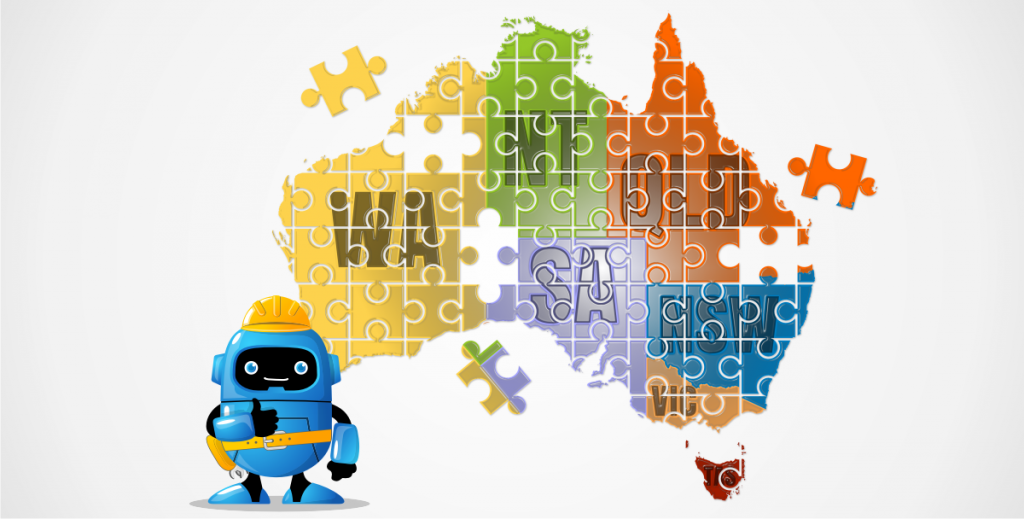3 Signs Safety Software Might Be The Solution For You
Safety software is a relatively new solution to an old problem. Have you ever thought to yourself, there has got to be a better way to stay complaint with safety regulations? Do you ever get frustrated that you have to fill out so many assessments and statements on paper. Do you find yourself missing things in your assessments because you are worried that it’s not in the right format?
These are just some of the frustrations that come with the process of staying compliant with safety regulations. It can have significant effects on your safety culture if you find the process of safety too difficult. If you have ever ran into any of the above, it might be time to consider finding a solution before it becomes too much of a headache that safety goes out the window and all your effort is spent just to be compliant.
In this article we will cover in depth 3 signs that it might be time to consider utilizing safety software before your safety is ignored for compliance.
You’re worried about compliance incase of an incident
Running a business is no easy task. It’s like juggling 10 things at once. When things are going well, it’s a great feeling. But it only takes one slip up or incident to cause everything to come crumbling down. The stress and anxiety of a WHS incident happening in your business is enough to keep anyone up at night. On top of that, if you know you might get slapped with a fine after the incident you’ll always be stressed or worse, you’ll delay reporting an incident. This can lead to huge fines and even jail time. No one wants that.
Safety compliance in the modern day is no simple task. There are a lot of regulations and legislation that you must adhere to in your day to day business. This can become quite a headache and adds to the stress of making sure you have ticked all the boxes. Or worse, leads you to ignoring your requirements and hoping that an incident doesn’t occur. As we have covered in a previous article, incidents happen to even the best of employers who are proactive with safety, its simply the reality of probability. If there is a chance, eventually it will happen.
Ask yourself this. If there was an incident at your workplace tomorrow and it lead to an inspection, would you be confident you would pass? Have you got a solid and refined risk assessment process in place to identify, assess and control risks in your workplace?
If the answer is not a confident yes then it might be time to look at solutions. Safety software like our platform SafeWorkPro allows you to focus on your process more while making the document compliance side of things a worry of the past. While SafeWorkPro won’t solve all of your safety worries, it will help you be more effective with your time so you can spend less time filling out forms and more time focusing on the actions that lead to a safer workplace. We have talked about how your process is more important than your documents in a previous article. In the eyes of the law, the concern is about what you actually do to keep people safe.
If you want to spend more time on safety and less time on the books, then safety software might be the solution for you.
Safety software makes documentation simple and easy
How long does it take you to complete a risk assessment from start to finish? What about a SWMS? Do you find it difficult to complete documents because of all the back and forth that is required between the site, office and in between your workers? If your documentation process is top notch and you have no issues with filling out lengthy paper documents then this might not apply to you. But for those that get frustrated with how much time away from work they have to take to complete documents, this one might be for you.
When the bottle neck for starting a job is the paperwork you need to complete for safety compliance it can become frustrating. It can sometimes feel like too much time is being wasted on paperwork when you could be working. This can lead to rushing through it which defeats its purpose. It also means that you are more likely to skip the processes that really matter to keep people safe.
If you are on a site that needs a SWMS and something changes that requires you to re-evaluate your SWMS, the process starts again and the tools are down until it is done. With safety software, the process of completing documentation is significantly easier. In principle, it is the same but in practice you’re saving time that would otherwise be spent filling a document and running around to get it signed. SafeWorkPro’s simple form based builder allows you to build custom documents which are super simple for your workers to complete on site when needed.
Save the hassle of the back and forth trying to get your documents read and signed by those on site. Have workers fill and sign documents from anywhere on site and have them submitted to the cloud for you to review from any location. SafeWorkPro even lets you get notifications when certain actions happen like a risk rating on a risk assessment matrix being too high or an incident is submitted. SafeWorkPro can help you save time on compliance and let’s you focus on what you do best.
Safety software helps you find old documents quick
Ask yourself this, can you find your risk assessment or SWMS from a job 2 years ago? If you were audited, could you produce it? This is something that isn’t obvious until it is an issue and by then it’s too late. How much of an impact on your day to day operations would a surprise audit have? Would you need to go digging through the back office folders to find the documents required? What a headache!
Even while you are on site, your documents like a SWMS need to be available for everyone to see. While they are there, they are likely to get damaged or degraded by weather. Sometimes, by the time they get stored for safe keeping they are almost falling apart.
With the safety of cloud document storage, SafeWorkPro can store all of your important documents online forever. With all of your documents in one place and neatly organized it’s super simple to find the documents you need, even if they are from years ago. Our software also makes audits quick and easy with next to no disruption in your operations. Export all of the data from your SafeWorkPro site for review without having to spend hours digging through folders, photocopying and physically delivering documents.
Conclusion
If any part of this article resonates with you, it might be time to consider trying out a better solution to using a manual safety process. Beyond just the convenience, SafeWorkPro can help you focus your time on the actions that truly make people safe, not just the actions that make you compliant. At the end of the day, that is what you will be judged on if you have an audit or investigation. Documentation is required of course, but that is simple the surface level when it comes to safety.
If you want to learn more about how SafeWorkPro could help you in simplifying your WHS, reach out to our friendly expert staff for a free, no obligation live demo.
Safe Work Australia
In the past, Australia’s vast array of workplace regulations made OHS compliance about as easy as blindfolded origami. Regulatory standards changed from state to state and figuring out which worksafe Australia codes of practice applied to which job required scrolling through pages of health and safety laws written in complicated legal-lingo. This cost businesses time and money, so in 2008 Safe Work Australia was established with the aim of streamlining this process.
Understanding the role of Safe Work Australia is central to comprehending the broader network of OHS regulations. Although the Work Health and Safety Act is long and complicated, Safe Work Australia works to standardise health and safety laws, prepare workplace codes of practice and suggest policy improvements to the government. In essence, Safe Work Australia is a model of health and safety codes of practice and OHS laws and regulations, that is reviewed by the government and then adopted by the respective states and territories.

Safe Work Australia Council
Safe Work Australia council is comprised of an independent chairperson, representatives of the federal government and from each state or territory, representatives from workers groups like the Australia Council of Trade Unions, representatives of employer groups and a Chief Executive Officer. As a statutory agency independent of partisan politics, Safe Work Australia aims to develop and maintain workplace safety policy that serves the interests of all parties in a fair and balanced manner.
But what is the role of Safe Work Australia? Well its key functions as set out in the Safe Work Australia Act are to:
• Develop a national occupational health and safety policy and workplace compensation
• Prepare a model OHS Act, work health and safety codes of practice and regulations
• Review and revise laws, the workplace health and safety codes of practice and regulations if necessary
• Develop a nationally consistent policy for the compliance and enforcement of workplace health and safety legislation
• Monitor the adoption process by the Commonwealth, states and territories of health and safety legislations, codes of practice, regulations and compliance and enforcement policy
• Collect, analyse and publish any data or research relating to OHS policies and procedures, and Australian workers compensation in order to better inform the policy development process
• Raise awareness of OHS and workers’ compensation issues
It should be noted though that Safe Work Australia is not the department of workplace health and safety so its proposals don’t become law until the government signs off on any changes. This approval process happens on two levels. Firstly the Workplace Relations Ministers Council (WRMC) oversees Safe Work Australia and directs their strategic and operation direction. The WRMC is made up of the state and territory leaders responsible for industrial safety topics, workplace relations and workers’ compensation matters. So it’s mostly ministers from the related portfolios like industrial relations. When the WRMC is happy with what Safe Work Australia is proposing they collectively sign off on the agreement and the proposal then becomes a Bill to be put to the respective state’s or territory’s parliament. If the Bill is passed, then you’ve got a new set of laws and regulations sanctioned by the government and enshrined by Safe Work Australia.
It seems like a long-winded process but the eventual goal of Safe Work Australia is to standardise all the OHS safety regulations, laws and codes of practice into one consistent national policy. When achieved this will mean that the rules of workplace health and safety Queensland will be exactly the same as those in NSW or any other state or territory. With everyone on the same OHS page it will make it easier for businesses to conduct their work across state lines and grow.
Why Are Risk Assessments Important?
We know hazard and risk assessment procedures are vital in maintaining workplace standards that are complaint with OHS laws and regulations, but there is another reason as to why are risk assessments important.
It’s more than knowing how to write a risk assessment – it’s about improving productivity.
It may sound absurd but there are methods of risk assessment available that can actually improve productivity in construction businesses. The traditional method of writing risk assessments involves multiple pages of paper work, administrative overhead and considerable amounts storage or filing. But completing construction risk assessments doesn’t have to follow this inefficient process. Your business productivity can be greatly improved by moving away from a paper-based risk assessment process and embracing the clear advantage mobile technology offers. We call it risk assessment software.
But don’t take our word for it. Just ask Steve Cole from Cole Contracting. He recognised the flaws of risk assessment paperwork and decided to use technology to improve productivity.
Work Method Statement Example Free Download

Running a construction business is a time consuming and costly task, so finding areas where efficiency can be improved is vital. Getting an affordable safety method statement complicates this but as technology develops so too to the options available to construction managers.
The problem with a typical safe work methods statement template is that it is either too broad to be used effectively in construction work safety, or too narrowly focused to be effective. With many free
safety templates lacking in detail and the expensive alternative lacking in cost effectiveness, construction managers must turn to alternatives in mobile technology.
That’s what we do best here at SafeWorkPro. Our easy to use mobile tool empowers construction workers with cheap, quick and compliant risk assessments and safe work method statements. The first version of the SafeWorkPro tool is online and ready for free download. Try it today and let us know what you think. We’re eager to hear.
In the meantime, you can access our resources page to use a free method statement and risk assessment template for your construction safety needs. This health and safety policy document is based on those published by Safe Work Australia and is fully compliant with current OHS policies in Australia.




